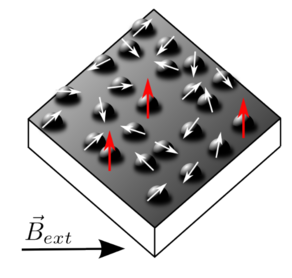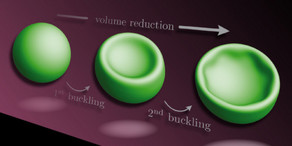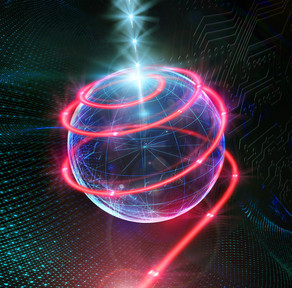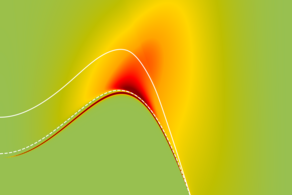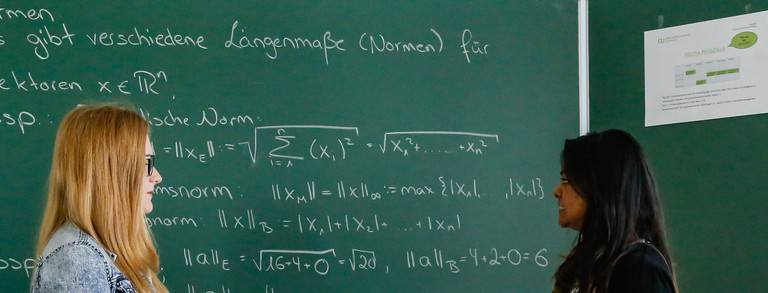Supervised Bachelor Theses
2023
- Nikola Mang
Characterization of a quantum engine in the BEC-BCS crossover - Matthias Maile
Trion excitation and decay in quantum dots described by truncated Wigner approximation
2022
- Jana Schlücking
Nichtlineare Antwort eines Spindimers auf THz Strahlung - Benedikt Sander
Exakte stationäre Zustände im gepulsten Zentralspinmodell mit gleichen Kopplungen
2021
- David Gutnikov
Iterierter Bewegungsgleichungsansatz für die Anregungen in Spinleitern - Julia Beater
Equations of Motion for the Single-Impurity Anderson Model
2020
- Yvonne Ribbeheger
Semiklassischer Zugang zur Dynamik wechselwirkender Fermionen - Katrin Bolsmann
Berechnung von Floquet-Zeitentwicklungen mittels kontinuierlicher unitärer Transformationen - Joshua Althüser
Nichtgleichgewichtsdynamik durch Laserpulse in Graphen
2019
- Sinja Behrensmeier
Überlegungen zu topologischen Effekten in Spinketten anhand von Azurit - Maximilian Krebs
Einfache Modelle für Spindiffusion
2018
- Jasmin Bedow
Quenches am Ising-Modell mit transversalem Feld - Vanessa Sulaimn
Trennung von schneller und langsamer Dynamik im Zentralspinmodell - Henning Ptaszyk
Untersuchungen zum Quanten-Hall-Effekt in Graphen
2017
- Timo Gräßer
Der inverse Faraday-Effekt im Mott-Isolator - Dag-Björn Hering
Floquet-Theorie für den inversen Faraday-Effekt - Matthias Jaeger
Magnetisierungsverhalten von anisotropen Spinleitern mittels exakter Diagonalisierung - Philipp Scherer
Nichtlineare Strom-Spannungsrelation in Isolatoren - Vincent Latko
Simulation des gepulsten Zentralspinmodells mit klassischen Spins
2016
- Felix Brauers
Relaxation von Impulsverteilungen wechselwirkender Bosonen - Sascha Knüttel
Dauerkorrelationen im klassischen Zentralspinmodell - Darvin Wanisch
Continuous unitary transformations on the quartic anharmonic oscillator - Jannis Kolker
Analyse der Eigenenergien des Jaynes-Cummings-Modells mit Hilfe von unitären kontinuierlichen Transformationen - Mona Kalthoff
Vergleich des Dichtematrixformalismus und der iterierten Bewegungsgleichungen am Beispiel des Quanten-Rabi-Modells - Gregor Fauth
Optimiertes Anschalten von optischen Gittern - Philipp Weinert
Exzitonen in zweidimensionalen Elektronengasen
2015
- Urban Seifert
Einfluss potenzierter Erhaltungsgrößen auf langlebige Spinkorrelationen im Zentralspinmodell - Philip Bleicker
Langlebige Spinkorrelationen im Zentralspinmodell bei endlichem Magnetfeld - Christoph Redder
Nichttriviale Chernzahlen in Einteilchenmodellen
2014
- Philipp Schering
Langlebige Spinkorrelationen im Zentralspinmodell
2013
- Kai Wenz
Berry-Phase beim Quanten-Hall-Effekt
2012
- Frederik Herbst
Systematische Verbesserung von Continuous Unitary Transformation-Resultaten durch Bogoliubov-Transformation - Karin Julius
Dynamische Entkopplung mit frequenzmodulierten Pulsen bei Kohärenzverlust eines zwei-Niveau-Systems durch Kopplung an zeitabhängiges Bad - Carsten Jan Lindner
Anwendung kontinuierlicher unitärer Transformationen auf einen Spindimer in Dyson-Maleev-Darstellung - Daniel Spannenkrebs
Variierte Störungsrechnung für quartische Oszillatoren
2010
- Tomasz Fuchs
Monte-Carlo Simulation des Ising-Modells - Benedikt Fauseweh
Frequenzoptimierte Realisierung eines Einzel-Quantenbitgatters - Johannes Hackmann
Kohärente Kontrolle korrelierter Spinsysteme - Frederik Keim
Die Dichtematrix-Renormierungsgruppe am Beispiel der Spin-1/2-Heisenberg-Kette

